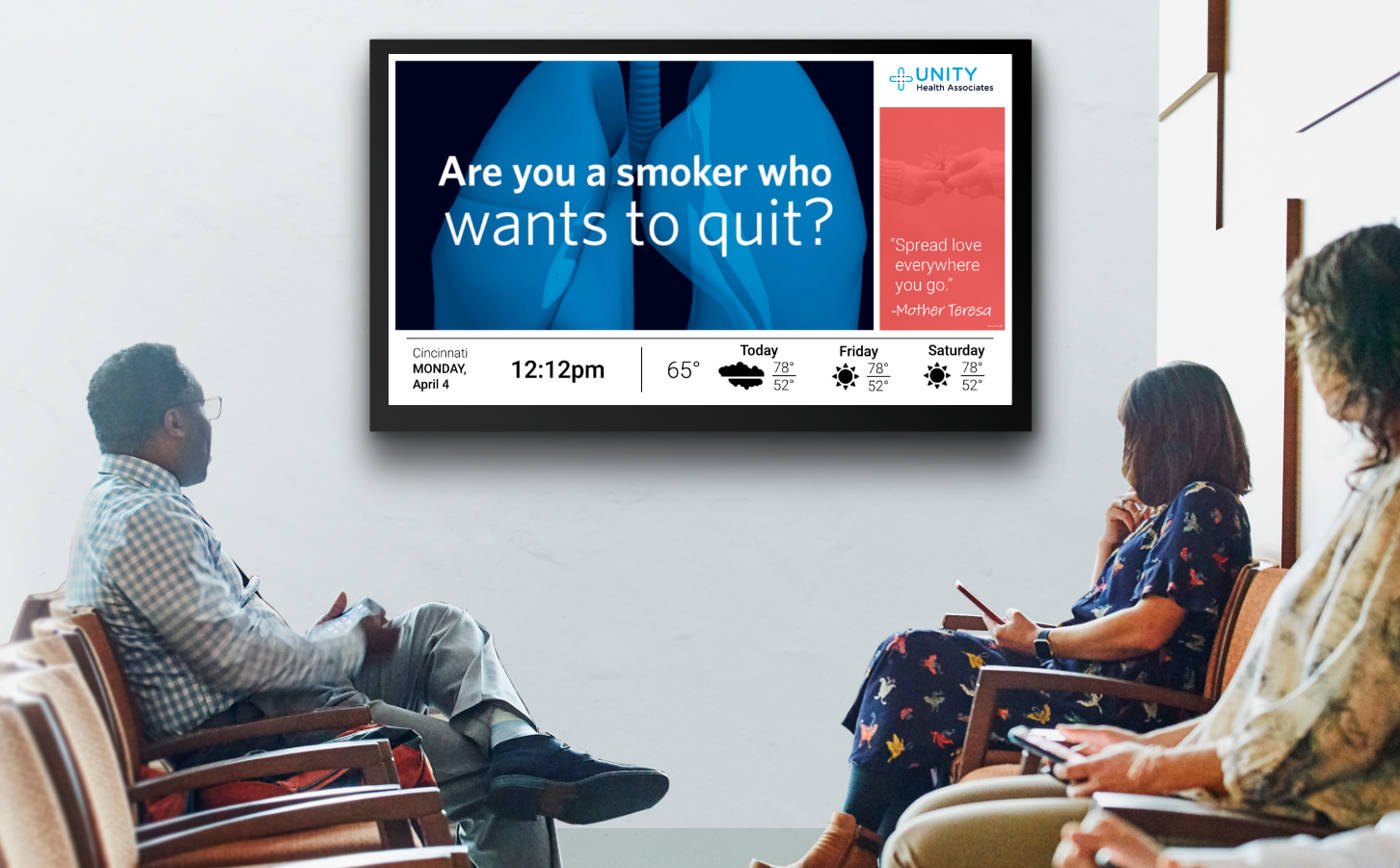Many successful public health campaigns have had a significant impact on improving health outcomes.
The “Tips From Former Smokers” campaign launched by the Centers for Disease Control and Prevention (CDC) in 2012 was a successful public health campaign to reduce smoking rates in the United States. The campaign featured real people who suffered from smoking-related illnesses and shared their personal stories to encourage smokers to quit. The campaign included TV ads, radio spots, print ads and social media messages.
The campaign was highly effective and led to increased calls to quit-smoking hotlines and visits to the CDC’s smoking cessation website. It also led to a significant increase in the number of smokers who made a quit attempt. According to a study published in The Lancet, the campaign was associated with approximately 1.64 million additional quit attempts and helped to reduce smoking rates in the United States by 1.6%.
Point of Care Amplifies the Impact
We believe that impact could have been more significant had the CDC pulled its campaign through to the doctor’s office, or the Point of Care. According to a recent PatientPoint analysis, a health system showcasing education on the benefits of quitting smoking increased tobacco cessation counseling among its patient population by 43%.
There is no other place where a person is more focused on his or her health than at the doctor’s office. Messaging within this contextually relevant environment ensures information reaches a captive audience who is primed to take positive action for their health, as the aforementioned data proves.
As marketing budgets get cut thinner and media fragmentation continues to increase, public health departments need to find channels that enable them to generate the most impact cost-efficiently. The Point of Care is proven to do just that.
Beyond proven to drive measurable improvements in health outcomes, messaging at the doctor’s office provides additional value few other channels can offer, such as:
- Trust and credibility: As a recent PatientPoint survey uncovered, more than half (54%) of consumers see their doctor as the most trusted source for health information. Doctors’ endorsement of public health campaigns can help to enhance credibility and drive action: People are 84% more likely to discuss an ad seen at the doctor’s office with their physician.*
- Reinforcement of key messages: Just as messaging at the doctor’s office influences consumer behavior, it is also proven to influence healthcare providers: 75% of HCPs say patient requests influence their decisions.* Healthcare providers can reinforce the key messages of public health campaigns during patient visits. For example, a doctor can encourage a patient to get vaccinated during a routine check-up or provide information about healthy eating habits during a nutrition consultation. Relevant education shown in the doctor’s office can also reinforce a campaign’s message.
- Integration with clinical care: Integrating public health campaigns into clinical care can help to make health promotion and disease prevention a routine part of healthcare delivery. This approach can help to improve health outcomes and reduce healthcare costs over time.
Overall, pulling public health campaigns through to the doctor’s office can help increase the impact and reach of these campaigns and promote behavior change among patients.
Learn more about why your public health message belongs at the doctor’s office.

